

Our Services
- Wireless Tower
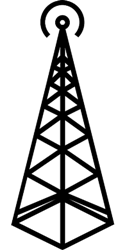
Types of Towers :
Collocation- Also known as Cell tower co-location, this is when you have more than one cellular company with an antenna on a single tower. This is more and more common these days.
Monopole tower- This is a single pole with an antenna of some sort on the very top. Some of these can be disguised to look like trees - fir trees in some areas of the country and palm trees in others.
Self-supporting lattice tower- When talking about cellular towers, this is one of the more common types that might be built on the land that you lease. They are completely safe.
Guyed tower- This is a free standing tower that is also guyed. You may have heard that term as guy-wire or guy-rope. Basically, it's a system that gives the tower additional stability.
Distributed Antenna Systems- Also known as DAS, this is a pole with several antennas on top that are separated by space. This reduces the amount of power they use while also improving reliability of signals.
Pico cells / Microcells- These are really small cellular antennas. Occasionally, they may be disguised as a boulder or some other natural item. They are usually used to increase signals in an area that needs it.
- ISP Network Solution
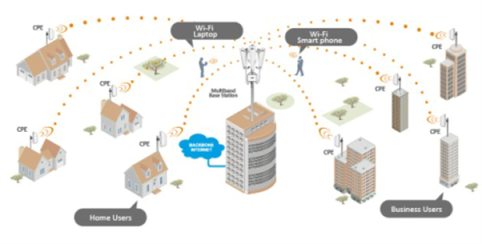
With consumer appetite for fast internet at unprecedented levels, ISPs are looking for more efficient ways to meet demand within an increasingly competitive environment.
Despite fiber's unlimited capacity, the high cost (both in laying new fiber and leasing) and slow deployment result in the solution being unfeasible for many scenarios.
This is especially the case for growing urban and remote locations where the initial customer concentration is often too low to make the business case for fiber.
In this light, a growing number of forward thinking ISPs are deploying a mix of wireless solutions which offer the optimum balance of performance and low cost.
The rise of reliable wideband wireless solutions mean ISPs no longer have to risk a degradation of quality of service to create the cost savings needed for an attractive business case.
- Wireless Solution

Wireless Solutions (base station infrastructure including site hardware and grounding) create a powerful portfolio of wireless infrastructure components and turn-key solutions.
Vtech Wireless Infrastructure's unrivaled wireless knowledge and service means that our customers receive complete solutions to deploy and manage their wireless network.
Indoor and as well as outdoor long distance solution
- Hotspot Solution
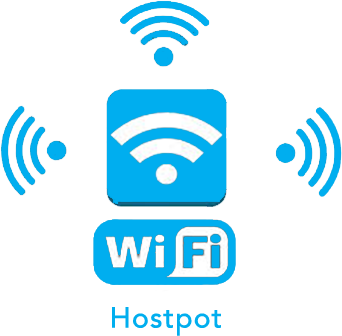
As Internet usage continues to become more mobile, customers have an increasing expectation for wireless Internet access at public locations, such as in coffee shops, restaurants, hotel lobbies, convention centers or airport terminals.
Whether you are thinking of running a hotspot for free or for a fee, you will need a hotspot management system to maintain quality of service for your customers, eliminate free-riders, and keep your network secure. VTech has developed an all-in-one hotspot solution to instantly turn your venue into a managed, branded and moneymaking hotspot.
As Internet usage continues to become more mobile, customers have an increasing expectation for wireless Internet access at public locations, such as in coffee shops, restaurants, hotel lobbies, convention centers or airport terminals. Whether you are thinking of running a hotspot for free or for a fee, you will need a hotspot management system to maintain quality of service for your customers, eliminate free-riders, and keep your network secure. VTech has developed an all-in-one hotspot solution to instantly turn your venue into a managed, branded and moneymaking hotspot.
- Point 2 Point Wireless

Vtech installs only the leading edge wireless point to multi point bridging solutions on the market today. Wireless Point to multi Point networks are perfect for the following situations:
- Connecting multiple buildings together
- High-Speed local or wide area corporate networks
- Video Surveillance and CCTV Networks
- Leased line or fiber replacement
- Point 2 Multipoint Wireless
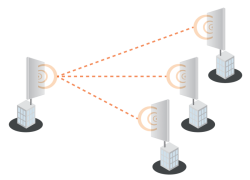
Vtech installs only the leading edge wireless point to multi point bridging solutions on the market today. Wireless Point to multi Point networks are perfect for the following situations:
- Connecting multiple buildings together
- Video Surveillance and CCTV Networks
- High-Speed local or wide area corporate networks
- Leased line or fiber replacement
- Wireless Mesh Networks
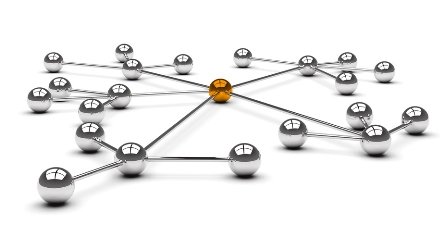
A fully mesh network delivers a self-configuring, scalable, and self-healing wireless network. Each mesh node will have redundant links to other mesh nodes which creates the inherent redundancy. Mesh networks are great for large outdoor environments as they can scale too many kilometers. As wireless becomes critical to the core of a business, outdoor wireless mobility has an increasingly significant role in the overall success of an organization. Outdoor wireless solutions must perform at the same high level that traditional wired and indoor wireless networks do.
Outdoor wireless networks must also support a unique set of requirements, including
- Mitigation of RF interference for enhanced performance
- New levels of security, performance protection, and policy enforcement
- Low maintenance costs
- Tight integration with existing networks
- FTTH - Fiber to the home solutions
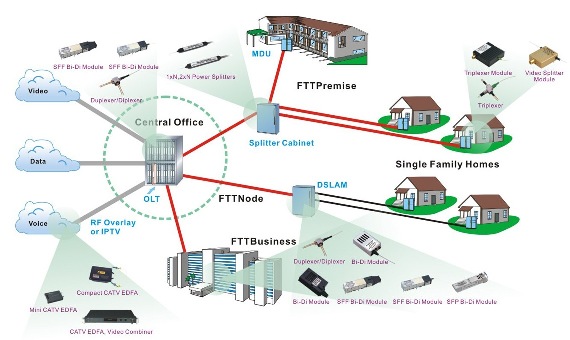
FTTH or Fiber to the x is a common term used to refer any network architectures that provides broadband connection with the help of optical fibers. In short, the technique that uses fibers instead of metals is called as FTTx. X in FTTx can take any configurations namely, N,C,H, B etc depending on there area of application.
While FTTN, FTTC, FTTB refers to Fiber to the Node, Fiber to the Cabinet and Fiber to the Building respectively, FTTH refers to Fiber to the Home. It is a type of delivery through optical fiber communication. In this technique, the light (or optical) signal carrying the information reaches the customer's residence or office. This is can be accomplished with the help of particular optical fiber wiring.
Providing broadband connections to individual residences through fiber optic cable is referred as FTTH connections. It can carry a large number of digital information more effectively and efficiently than ordinary coaxial cables. Thus it is best suited for carrying telephonic information, video and audio information.
The connection speed of FTTH and FTTH equipment is faster than any other broadband connections. Its carrying capacity or throughput is also far better than DSL, twisted pair cables or coaxial cables. While a single pair of copper conductor has the ability to carry only 6 telephone calls, a pair of optical fibers can carry even more than 2.5 million calls at the same time.
FTTH has enough bandwidth to support a large number of customers in the coming decades. FTTH is also reliable and cost-effective. Thus it is easily affordable by any consumers. Holographic HDTV of 3-dimension will require up to 30-gigabyte per second for its operation. FTTH can handle such very high Gbps rates making it possible to use such HDTV and its related games in every household in the near future.
The data transmission rate of FTTH can be made even higher. It has created a possibility to invent new products far beyond dreams. FTTH broadband connection allows the consumers to have all their communication services in a single line. Receiving a telephone, video or audio information can be made possible in a single simple FTTH connection. Receiving them via different lines would turn costlier and difficult to maintain.
The technologies used in FTTH and FTTH equipment are the PON or Passive Optical Network and the Gigabit Ethernet technology. FTTH having shared fiber architectures uses PON technology whereas those with direct fiber architectures use Gigabit Ethernet.
The optical networks required by FTTH to function are active and passive networks. These networks are necessary to route the data to the desired destination. AON or the Active Optical Network uses routers to direct the signals to the required customer. It uses a switching equipment is electrically powered. To direct the signals (both incoming and outgoing) to a specific place, this switch can be used. So it is possible to have a fiber, dedicated exclusively to one's house.
PON uses optical splitters rather than switching equipments. This splitter can be used to split and collect the optical information when they are moving through the network. Both have some distinct advantages and disadvantages.
More than 10 million users across the world use FTTH solutions and FTTH equipment for broadband connections. With the technology offering cheap as well as reliable facilities that are affordable by a common man, FTTH is going to be the mantra of broadband users.
In VTech we had developed about everything you need for the active and passive networks to develop FTTH network.




